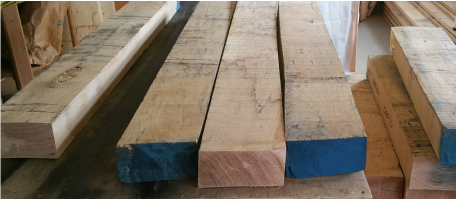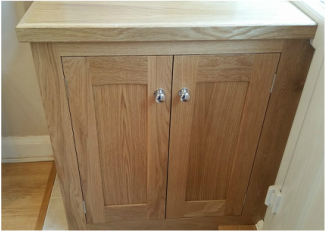
Turning this

and this
Both pictures are of rough sawn oak.
This is how I buy my timber from my timber merchant, in it's rough sawn state.
Both pictures are of rough sawn oak.
This is how I buy my timber from my timber merchant, in it's rough sawn state.
& eventually something like this
This is something I don't really give much thought to as a rule.
But on the odd occasion a customer has seen the timber in it's rough sawn state before I have had a chance to plane it, I have had quite a few remarks mostly borderline amazement that this timber will turn into a flat, smooth and generally gorgeous looking piece of wood which will then in turn, be used as a component in their new wardrobes or kitchen etc.
One of the comments as I recall was along the lines of 'are you using packing crate or pallet wood'...... So we had a little chat.
So here is a basic explanation of what I have to do to convert rough sawn timber to smooth, straight usable wood.
You can buy timber planned from some timber merchants, but I always buy the rough sawn version as I know that I can make a better job of converting rough sawn, to flat, square and parallel wood. I also make a point of going to the timber merchant to choose the timber I am buying, which can involve sifting through stacks of timber to find planks that are relatively flat on both faces and as free as possible from defects such as, knots, twists, shakes, splits, sapwood etc. The reason for this, I know that if I can select reasonably flat and defect free timber the finished product will benefit and be of a better quality, and the planning process will be a little more straight forward.
Having said all that, you have to go with the flow somewhat, this is not a perfect world and neither is a plank of timber, and therein lies the beauty of natural materials. No plank I buy is perfectly straight and defect free, and this where I have to earn my keep, because it's how you plane and cut the joints and generally utilise the timber that makes the difference.



 RSS Feed
RSS Feed
